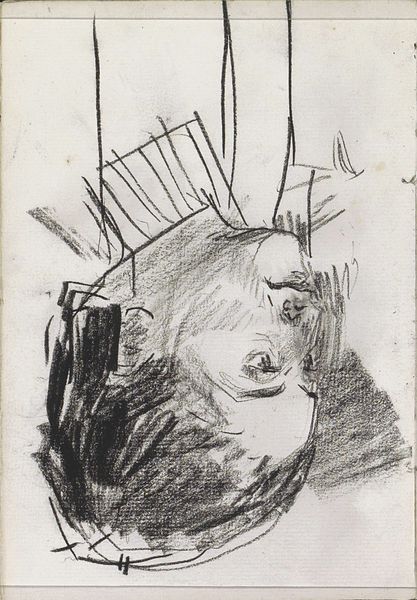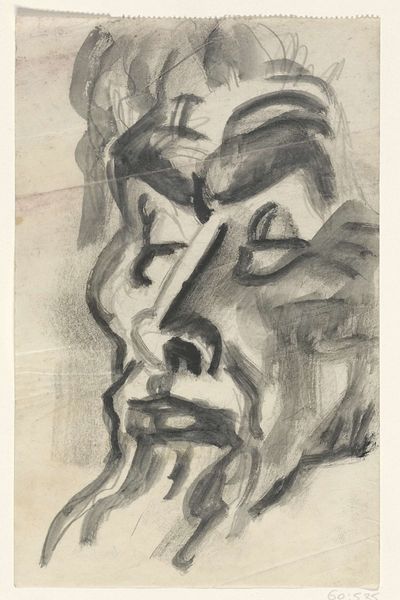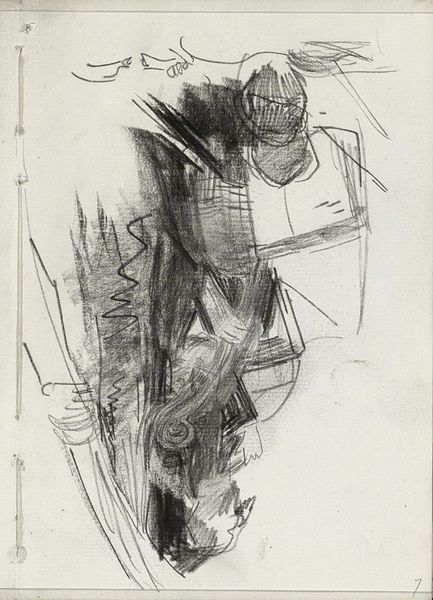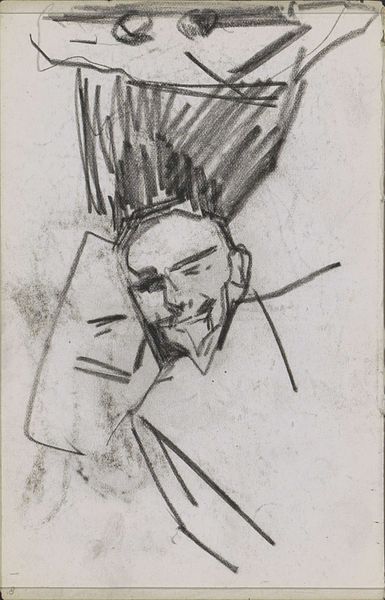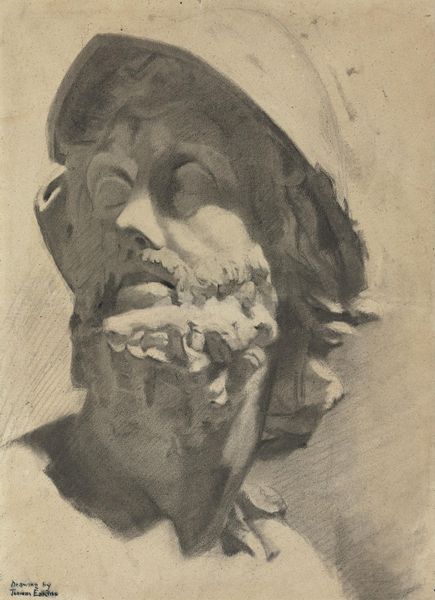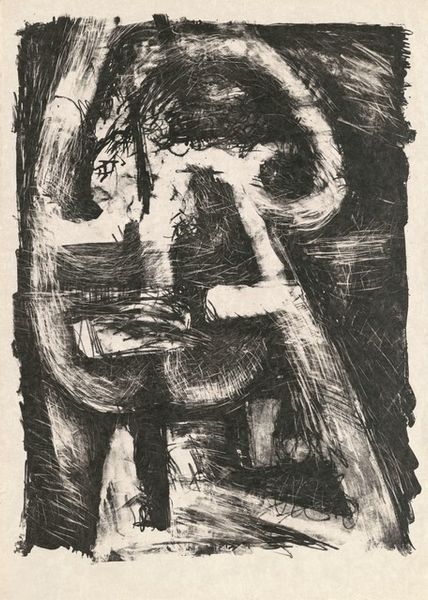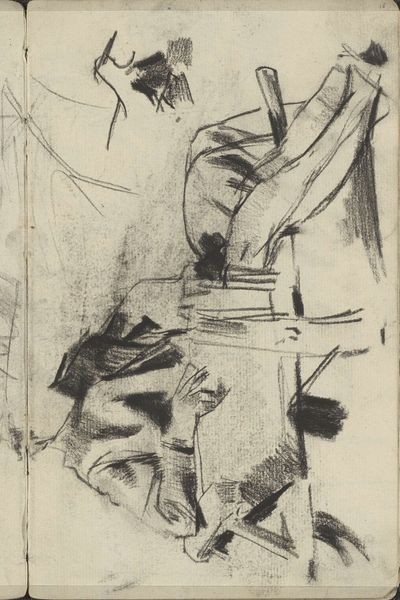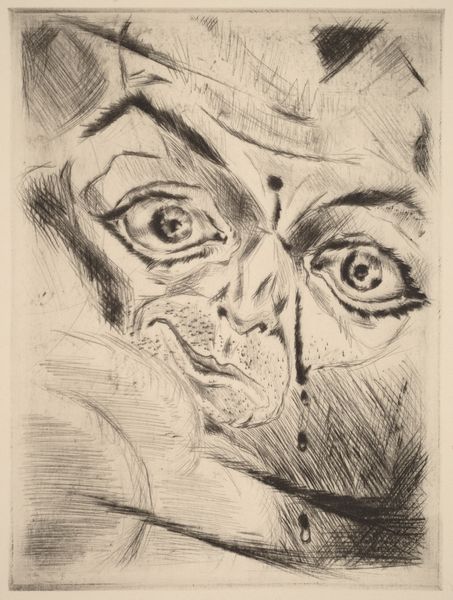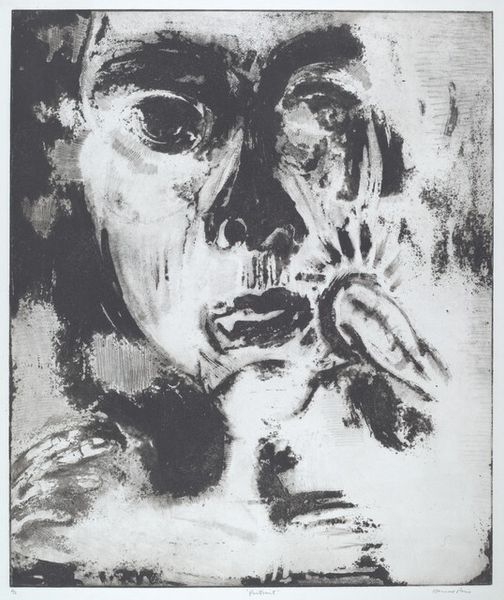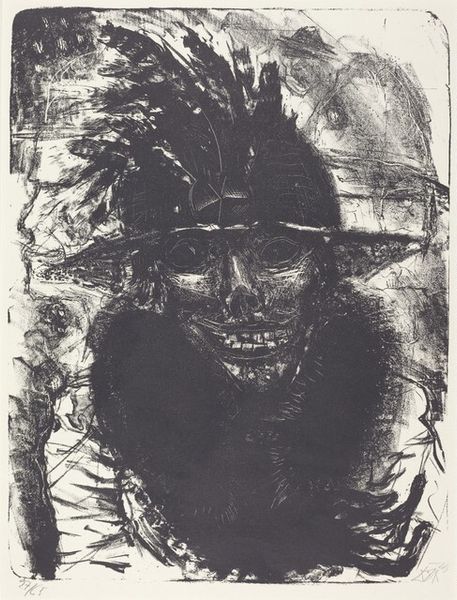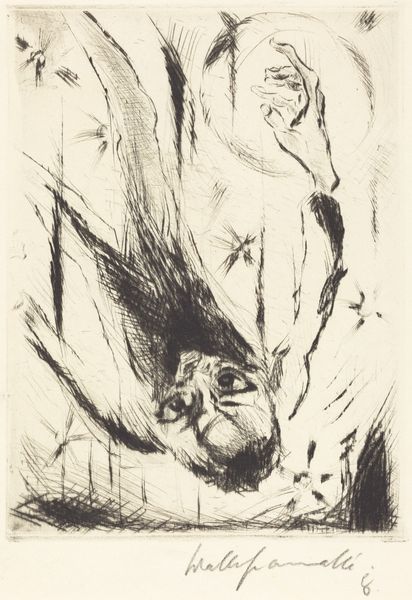
Dimensions: height 160 mm, width 120 mm
Copyright: Rijks Museum: Open Domain
Gerrit Willem Dijsselhof rendered this study of a man’s head in charcoal. The man’s face is obscured, his head bent low, with his fist pressed firmly against his forehead. The hand, a tool, and extension of the mind becomes in this image a shield against some torment. Consider the motif of the hand to the head throughout art history. From Rodin’s Thinker to countless images of melancholic saints, this gesture signifies contemplation, sorrow, and inner turmoil. Its presence taps into a collective visual memory. In ancient Greek art, this gesture often denoted mourning or deep thought. Through the Renaissance, it evolved to express intellectual or spiritual crisis. Here, Dijsselhof reduces it to its primal form. The man seems to withdraw into himself, creating a barrier against the world. The lack of distinct facial features enhances the universality of suffering, inviting us to project our own anxieties onto the figure. The motif’s enduring power lies in its ability to evoke a visceral response, reminding us of the cyclical, timeless nature of human emotion.
Comments
No comments
Be the first to comment and join the conversation on the ultimate creative platform.
